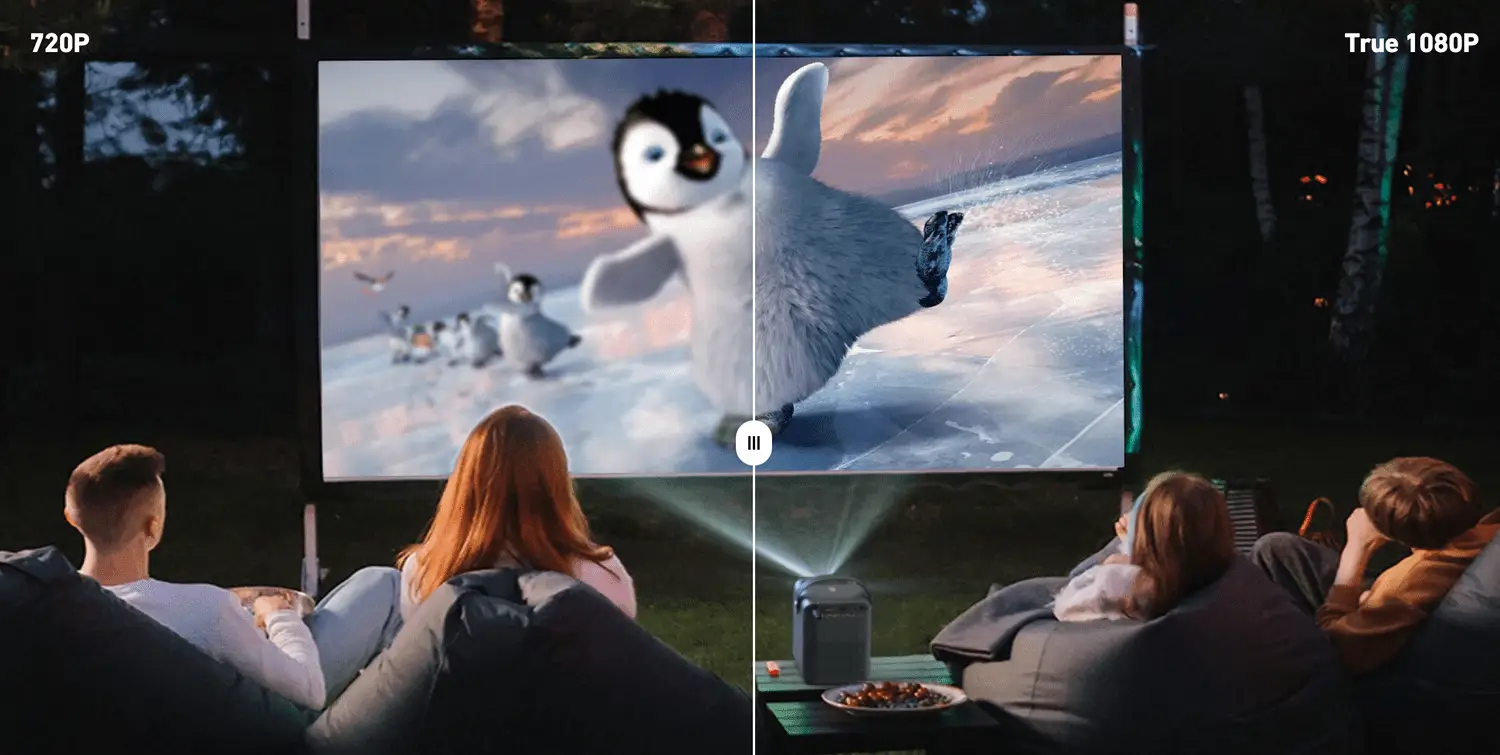

Embarking on the journey to find the perfect home projector demands a profound understanding of resolution. In the realm of projectors, resolution is the intricate dance of pixels shaping an image. Let’s delve deeper into the basics and the profound significance of pixels, both horizontally and vertically.
Understanding Resolution
In the world of projectors, resolution refers to the number of pixels that make up an image. It’s the key determinant of how clear and detailed the picture will be. Imagine pixels as tiny dots, each contributing to the overall visual experience. The higher the resolution, the more pixels are packed into each square inch, resulting in a sharper and more vibrant image.
Pixels, the building blocks of resolution, form a complex grid. This grid consists of horizontal and vertical pixels, defining the clarity and detail of the image. For instance, in a 1080p resolution, the “1080” represents the vertical pixels, while the “p” signifies a progressive scan, indicating how the image is drawn on the screen.
Understanding the role of pixels is akin to unraveling the DNA of an image. As we journey through the pixel odyssey, we’ll explore common resolutions in the market, decode the differences between native and supported resolutions, and guide you in choosing the right resolution for your entertainment needs.
Decoding Pixels: A Pixel Odyssey
Pixels, the intricate DNA of an image, form a complex grid that denotes the resolution. This grid is composed of horizontal and vertical pixels, and understanding their interplay is crucial. The 1080p resolution, for example, is named after its vertical pixels, while the “p” denotes a progressive scan, indicating how the image is drawn on the screen.
| Resolution | Horizontal Pixels | Vertical Pixels | Total Pixels | Common Names | Notable Features |
|---|---|---|---|---|---|
| 480p | 720 | 480 | 345,600 | Standard Definition (SD) | Suitable for basic content |
| 720p | 1,280 | 720 | 921,600 | High Definition (HD) | Good for general use |
| 1080p | 1,920 | 1,080 | 2,073,600 | Full High Definition (FHD) | Excellent detail for movies |
| Ultra HD | 3,840 | 2,160 | 8,294,400 | Ultra High Definition (UHD) | Crisp and clear visuals |
| 4K | 4,096 | 2,160 | 8,847,360 | 4K UHD | Highest resolution available |
This table breaks down the pixel disparities between common resolutions, emphasizing the intricate dance of pixels and their impact on visual clarity and detail. It serves as a guide, allowing you to grasp the differences and make informed decisions when selecting a projector.
Common Resolutions in the Market
- 480p: Foundational resolution for everyday use, offering a standard visual experience.
- 720p: Elevates clarity, ideal for enjoying HD content with improved sharpness.
- Ultra HD: A significant leap in clarity, particularly noticeable on larger screens.
- 4K: The epitome of resolution, promising unparalleled detail and cinematic splendor.
Understanding these resolutions is crucial, as they determine the level of detail and clarity you’ll experience in your visual content. But the pixel odyssey doesn’t stop here; let’s delve into the essence of pixels and the distinction between native and supported resolutions
The Essence of Pixels: Native vs. Supported Resolution
Pixels are the building blocks of a projector’s visual prowess. The native resolution serves as the projector’s inherent setting, representing its true clarity and display capabilities. It’s akin to the projector’s default state, showcasing the highest level of visual fidelity. When you play content in the native resolution, you’re witnessing the projector’s optimal performance.
On the flip side, supported resolution measures a projector’s adaptability to different formats without sacrificing quality. However, it’s crucial to note that the supported resolution doesn’t enhance the visual clarity beyond the default setting. It allows the projector to flexibly handle diverse content, ensuring compatibility with various devices.
In essence, comprehending these distinctions empowers you to select a projector that harmonizes with your preferences and viewing habits. It goes beyond mere numbers; it’s about how those pixels seamlessly come together to craft a visually immersive and enriching experience.
Streaming Apps Influence on Resolution:
The clarity you get from your projector is only as good as the content it displays. Different streaming apps offer content in various resolutions. Some may provide 4K content, while others stick to lower resolutions. Your choice of streaming apps directly influences the quality of the visuals you experience on your projector. It’s crucial to consider this when selecting streaming services and projectors.
| Streaming App | Monthly Price (USD) | Supported Resolution |
|---|---|---|
| Netflix | $8.99 – $17.99 | SD to 4K Ultra HD |
| Hulu | $5.99 – $64.99 | 720p HD to 4K Ultra HD |
| Disney+ | $7.99 | 4K Ultra HD |
| Amazon Prime Video | $8.99 – $12.99 | SD to 4K Ultra HD |
| HBO Max | $9.99 – $14.99 | 1080p HD |
| Apple TV+ | $4.99 | 4K Ultra HD |
| YouTube TV | $64.99 | 1080p HD |
Explore the table showcasing popular streaming services alongside their respective resolutions. Keep in mind, higher subscription tiers often unlock superior resolutions. As you contemplate your home projector purchase, consider the compatibility with your preferred streaming service and determine the optimal resolution that aligns with your viewing preferences.
Choosing the Right Resolution
Selecting the optimum resolution hinges on personal preferences and viewing habits. Whether opting for budget-friendly solutions or aiming for the cinematic splendor of 4K, understanding the role of pixels empowers us to make informed decisions, ensuring that every pixel contributes to a visually enriching experience.



